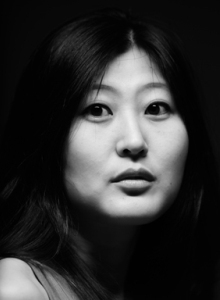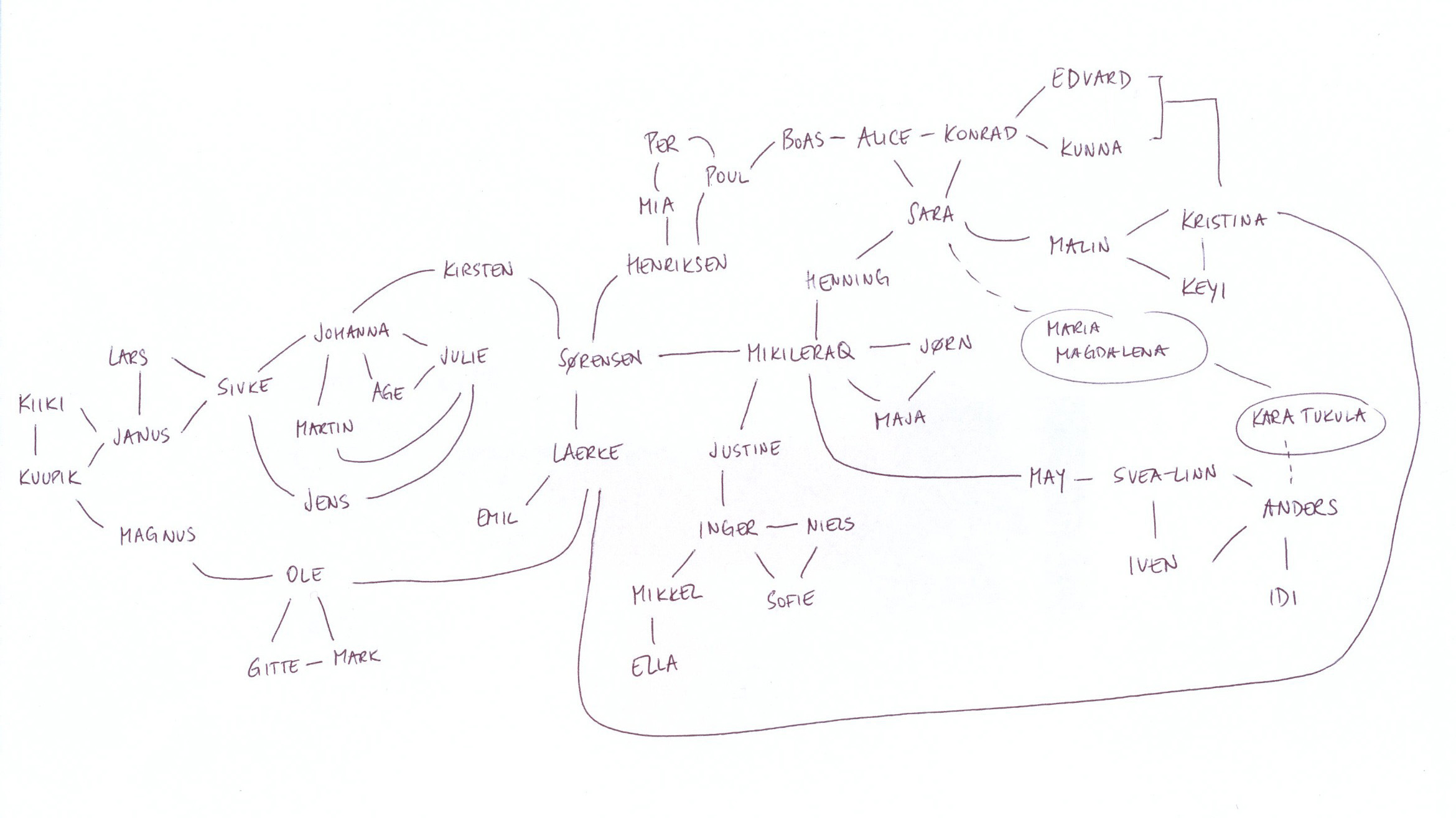“ . . . as if it were easier to die in the darkness, as if it would be shameful to die in the light.
– Anna Kim, Anatomy of a Night –

Anatomy of a Night
Anna Kim
Translated from the German by Bradley Schmidt
Frisch & Co., ebook
361 pages, $6.99
When Anna Kim’s third book, Anatomie Einer Nacht, came out with the venerable German publisher Surhkamp{{1}}[[1]]For a moving account of the role this publishing house played in the career of just one of its authors, see Holly Case’s recent article in The Nation, “Safety Net: On Thomas Bernhard and Siegried Unseld.”[[1]] last September, the website sandameer.at called it “among the most exciting and beautiful German language texts in recent years.” This year, Bradley Schmidt’s translation of Kim’s novel is the first title to be released by Frisch & Co., a Berlin-based press devoted to publishing ebooks of contemporary literature in English-language translation. As founder E. J. Van Lanen has explained, focusing solely on ebooks allows the new press to dedicate its resources to translating a far greater number of works (Frisch & Co. will release five more titles in the next eight months).
Anna Kim was born in South Korea, but moved with her family to Germany when she was two years old. Kim studied Philosophy and Theatre at University of Vienna, where she wrote her masters thesis on the Georg Lukács’ Theory of the Novel. At 35 years of age, Kim is a past recipient of an Elias Canetti Scholarship, a Robert Musil Scholarship, and the European Union Prize for Literature. These awards not only provide evidence of the respect Kim has garnered thus far as a writer, but help to give a context for the type of European modernism her work is informed by – a novelistic tradition that values complexity, experimentation and ambiguity.
Anatomy of A Night is as strange a book as I have read in some time. Anna Kim takes chances; she writes in precisely the way she wishes, without concern for losing her reader. She has said in an interview that the ideal reader for this book will be “patient, willing to invest a lot of time and brain power, willing to confront themselves with a life that is so different from what we know, a life that may puzzle, confuse and cause disbelief.”
The book is set between 10pm and 3am in Amarâq, a fictional Inuit settlement in east-Greenland, where “Everything is shared, and everyone owns only one thing: themselves.” In the course of five hours, we watch eleven townspeople commit suicide.
Amarâq is Kim’s stand-in for the real settlement of Tasiilaq, Greenland; the book was inspired by actual events. Kim first became curious about Tasiilaq in 2008, after 16 of the town’s residents tried to kill themselves on a single evening. Apparently, such “suicide waves” occur at around the same time each year in Tasiilaq: in one night, 5-20 people will attempt suicide, without prior arrangement or agreement with each other.
In Kim’s Amarâq, unlike in Tasiilaq, all suicides succeed. In addition to the eleven who die on the night in question, at least a dozen other suicides and murders are described as part of various characters’ pasts. If, as Lukács writes, “the content of the novel is the story of the soul that goes to find itself, that seeks adventures in order to be proved and tested by them, and, by proving itself, to find its own essence,” then the content of Anatomy of a Night is the story of a community of souls moving in paradoxical isolation towards the discovery of a shared essence: self-inflicted death.
There is the sense that some ominous force lurks in Amarâq, which condemns the people to their cycles of suffering and death, almost as if they were caught up in a bad dream. “The dying spread like a plague,” Kim writes in the prologue, “the victims appeared to have become infected by nothing more than a touch or a gaze—afterwards it was called a disease.”
Fog drifts in and out of scenes, and it is often difficult to place where exactly we are in the town, or even in time, as Kim switches back and forth between tenses within the same paragraph, sometimes even in the same sentence. For more than half of the novel I was certain it must actually be called Anatomy of a Nightmare – I had to keep going back to the title page to remind myself that I had added that final syllable.
A number of possible motives for the suicides appear over the course of the book. Yet, like the “iridescent icebergs” Kim so beautifully describes, these motives “float through the dimensions like images from the past, hazy, unapproachable, you can lose yourself in a desire to grasp them . . .” However much we may wish to come to a conclusion about the cause of these deaths, Kim is artist enough to let each theory stand for what it is: a possibility.
Kim’s prose style also enacts the difficulty of reaching concrete conclusions. Her beautiful sentences offer riddles as often as they clarify. Chapter 1 begins:
Sivke Carlsen has just met a stranger; he tosses his shoes into the air, and they freeze for a moment, suspended in the darkness, as if they were following an invisible path, tracks in the snow.
This mysterious opening suspends time and induces disorientation. For a reader unacquainted with gender of the name Sivke, there is the additional confusion as to who is tossing their shoes in the air. Is “he” Sivke Carlsen, or “the stranger”? More significant, though, is how the shoes “freeze for a moment, suspended in darkness.” Have we entered an alternate, surreal universe, or is Kim is simply employing metaphor? The next sentence reads:
She can’t see his face, he’s draped in a uniform, seems tall, but also very thin, his clothes hardly touch his body, rather they protrude from it, like a board.
Now we are beginning not only to see, but to understand. Sivke is a “she,” and “he” is “the stranger,” whose clothes fit him strangely. Moreover, we see this man as Sivke does, from her point of view, in what is commonly called third person limited omniscience. As a reader, things are almost getting comfortable. Then comes the third sentence:
He often finds himself on earth because in truth the sky is limitless, in flight the certainty of the plain is abolished and makes room for an ambiguity that short circuits the eyes and the brain; suddenly it’s possible to toss sleds into the air, to hang them from the firmament, ride them across the sky, a trip that feels like a ride through the snow: it’s a little quieter up here, the silence interrupted by the voices of individual birds, the rushing of the wind replacing the rushing of the sea, the runners gliding soundlessly, as if they’re passing over fresh snow.
We have jumped to a completely different point of view, inside the stranger’s head. All of a sudden it’s as if the book itself has short-circuited our eyes and brain, taking us up in the air with those shoes. And there’s that crucial word, hanging there with the sleds and the shoes: “ambiguity” (Mehrdeutigkeit Platz, Kim writes in German, literally: Ambiguity Place). The scene continues with the stranger, introduced as Jens, slipping on a pair of boots. Eventually he and Sivke embrace. But what about the shoes? Kim doesn’t describe them coming back to earth. She doesn’t even tell us why they were thrown up into the air. Such is the world we have entered.
Kim’s sentences repay close rereading, but there were also many occasions throughout the book you have to bracket comprehension and move on in the hope of further clarity ahead. Another challenge the text presents is the overwhelming number of characters that appear, one after another, in short enigmatic scenes. In the course of Anatomy of a Night’s 360 pages, no fewer than forty-eight integral personages appear. Gradually, we learn of the events – poverty, abandonment, abuse, alcoholism, death – that have led the eleven suicides to where they find themselves on this particular evening. To help the reader keep track of the characters and their connections to one another, Frisch and Co. has published this map on its website:
[Click on the image to make it larger.]
48 is the same number of characters in Robert Altman’s A Wedding (Altman set himself the challenge of doubling the 24 characters from his 1975 masterpiece Nashville), but Anatomy of a Night is no Altmanesque romp, bursting at the seams with life. Most of Kim’s scenes unfold with only one or two individuals present, as if to emphasize the inner solitude of these characters, the silence and space that surrounds them. Structurally, the book reminded me more of Richard Linklater’s early 90’s film Slacker, in which one vignette or set of characters gives way to the next, each of them connected, by time and geography, through the camera’s movements. Yet both Slacker and A Wedding, set over the course of a single day, are daytime films. Kim’s novel belongs to the night, full of “wind and destruction,” as an epigraph from To the Lighthouse reminds us. Kim excels most at creating the space of this night, anatomizing it, painting the haunting connections between isolated beings:
As soon as the wind’s breath has abated, the dogs howl; exposed on the banks of the river, they live in holes buried in the ground and sing in their pack, infected by soloists whose song, still isolated, still thin, belongs to the darkness like the rush of the wind and invisibility: the night permits much that appears impossible in daylight, even dying—as if it were easier to die in the darkness, as if it would be shameful to die in the light.
———————–
Eric Foley holds an Honours BA in English and Literary Studies from the University of Toronto and an MFA from Guelph University. He has been a finalist for the Random House Creative Writing Award, the Hart House Literary Contest, and the winner of Geist Magazine and the White Wall Review’s postcard story contests. His writing can be found online at Numéro Cinq and Influencysalon.ca. He lives in Toronto and divides his time between his writing and teaching at Humber College.



Terrific review, Eric. I want to read this fascinating story now!
Thanks, Rich!